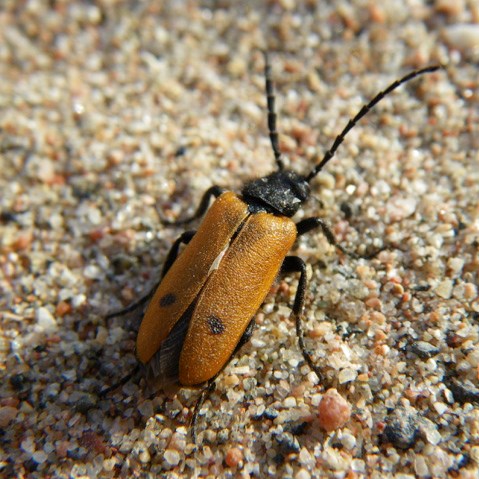Contact
Åsa Berggren, professor
Department of Ecology, SLU
asa.berggren@slu.se +46 (0)18-672344

The ecology of non-native species’ invasions and the establishment of wanted species are similar. For one group (the invasives) we try and find out what is relevant for colonisation, establishment and spread so that we can limit the success of species doing this. For the other group (species of conservation concern) we want to find out the same things, but then the purpose is how can we improve the likelihood of them succeeding.
In our research we work both with insects that are non-natives and insects that are threatened and where management actions are needed to increase their chance of survival. The ecological data is gathered both from field experiments (where we work at large landscape scales) and small scales (where we can study individual’s movements).
Conservation introduction of a species is an important practice in conservation. This tool is used in many conservation programs and guidelines based on many years of professional experience are available at IUCN’s SSC Conservation translocation specialist group. Conservation translocations will likely increase with the ongoing destruction and fragmentation of habitats. To make introductions more successful, knowledge about what will improve success is extremely valuable. The ecological factors outlined as important are also relevant for invasive species’ ability to colonise and establish in new areas. In our research we are focusing on aspects linked to both the species itself and to the landscape. We examine how they affect species’ ability to reach and colonise areas, and establish viable populations. We examine this in long-term (+25 years) and large scale (spanning > 100 km) experiments to be able to that in a controlled way examine this.
The way individuals react to and move in the environment will in part decide the fate of populations. Being able to move away from hostile habitats or searching for new areas to colonise will increase species’ ability to expand and also better tolerate negative factors such as habitat degradation. It is not only the individual’s physiology that determine how they can utilise potential pathways in the landscape, but also how they behaviourally react to the environment that faces them. We are gathering new knowledge in this area by observing individual behaviour in experimental set-ups in the field where the results of individual decisions are monitored. To capture how populations and species distribution are affected by available habitats, habitat structure and available pathways we use a combination of large-scale studies where the fates of individual populations are monitored as well as entire species distributions. We study how this changes over time and what this means for species’ adaptation. When managing invasive species there is another aspect of distribution expansion than ‘where will the species colonise next’ and that is ‘how fast will they get there?’ Knowing how fast a non-native will take over areas will give managers information on what time frame they need to work within. One complicating factor when understanding invasion speed is that often there is a huge lack of reliable data for these models. In our research we have been able to develop and evaluate models as we have large amounts of experimental data to rely on.
Åsa Berggren, professor
Department of Ecology, SLU
asa.berggren@slu.se +46 (0)18-672344